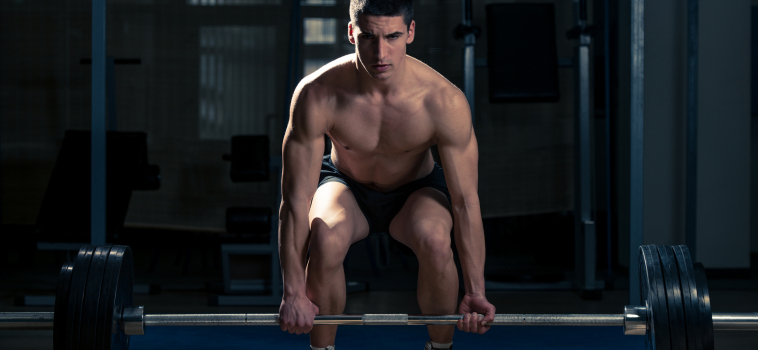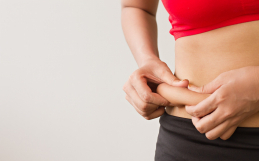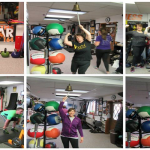Deadlifts have long been considered the king of exercises, and for good reason. All compound movements are beneficial, but none quite as impressive as the deadlift. If your goal is to burn fat, get stronger, or build muscle, be sure to make them part of your regular workout routine. There are several variations but for the purposes of this article, we will focus on the three main ones – The Trap Bar/Hex Bar Deadlift, The Sumo Deadlift, and The Conventional Deadlift.
Deadlifts fall into a greater movement category – hip hinge. A primal movement patter, the hip hinge is predominantly used to load the hips to lift weight off the ground (dead weight hence deadlift). Specifically, hip hinge patterns target the muscles of the back, glutes, and hamstrings.
Before attempting any variation of the deadlift, you must master the hip hinge:
Start the movement with no weight, instead dig your fingers into the creases of your hip. If you have difficulty finding this, sit down and dig your fingers in the crease at the bottom of your stomach on the top of each thigh and stand up.
- From a standing position, place your fingers in the creases of your hip.
- Push into the hip so your butt goes back and your torso leans forward.
- Keep your chest out and eyes roughly six feet in front of you.
- Push your hips as far back as possible while keeping your shins as vertical as possible.
Tension should be felt in the back of your leg. Understanding the hip hinge will allow you to lift heavier weight while deadlifting but more importantly avoid dumping the load into the lower back. Once, you have mastered an unloaded hip hinge, you can try adding weight.
Special Note: Unless you are an experienced power lifter, deadlifts should always be performed with a flat back (neutral spine).
Deadlifts and Low Back Pain
“Deadlifts hurt your back.”
– Someone who is not deadlifting correctly
When it comes to the spine and exercise, there are two main things people worry about – spinal shearing and spinal compression.
Spinal compression is exactly what it sounds like – your vertebrae are compressed and come closer together. Most movements will cause some kind of spinal compression and is not normally a big deal. It can get you into trouble if you do not have proper mobility or do not understand what a neutral spine is. If either of these is the case, talk to a fitness professional before starting a deadlifting program.
Spinal shearing is side to side movement. Most people are not suited to deal with spinal shearing, largely due to weakness in the lats, midsection, glutes, and hamstrings. Because of the weakness, the dump loads into the lower back – not good.
Special Note: If your doctor says no deadlifts, then listen to him or her.
The Trap Bar/Hex Bar Deadlift
Mobility demands are less with this variation which makes it best for beginners. The weight is placed at your sides rather than in front which places more emphasis on the quads. In fact, because a Trap Bar/Hex Bar Deadlift looks a lot like a squat, it is often referred to as a DeadSquat. If your goal is weight loss and want to stick to higher reps (15-20) this is the way to go.
The Sumo Deadlift
https://youtu.be/HXzDZu3hU68?t=10s
Many find this variation more comfortable in terms of leverage. Sumo Deadlifts utilize quads, glutes, and hamstrings. The demands of groin flexibility makes this movement uncomfortable for most when starting off. As with all deadlifts, there is risk of shear forces which is why and care should be taken when trying this lift out. Sumo deadlifts are best for strength gains and reps should be limited to 6 or under.
The Conventional Deadlift
Conventional Deadlifts place the greatest demand on hip mobility and have the greatest activation of glutes and hamstrings when executed properly. However, if you do not have strength in the hamstrings this lift will result in the most shear forces of the spine. Like sumo dealidfts, these work best for strength gains and reps should be limited to 6 or under.
Which Deadlift Is Best?
That depends on several factors.
How experienced are you with the movement pattern? When new to deadlifting, start with the trap bar and progress to sumo then conventional.
What are your goals? If you want to build strength and muscle, Sumo or Conventional are right choices. For fat loss purposes, the Trap Bar may be your best bet.
If you have been deadlifting consistently, switch your main variation around. Those who predominantly lift conventional will have no problem moving the weight off the ground but will struggle up top during the lockout. Those who prefer sumo will struggle moving weight off the ground but dominate the lockout. In general, you can get the benefits of all by switching them periodically into your workouts.





